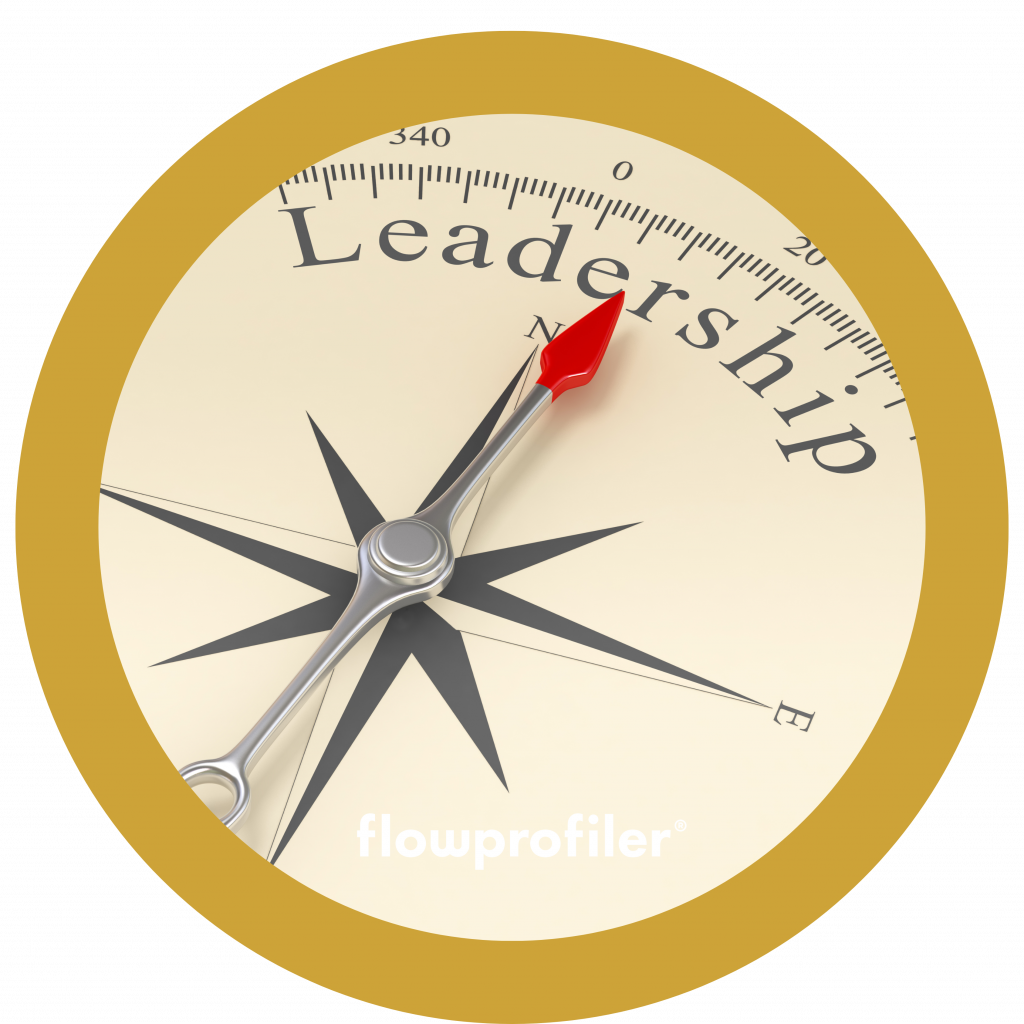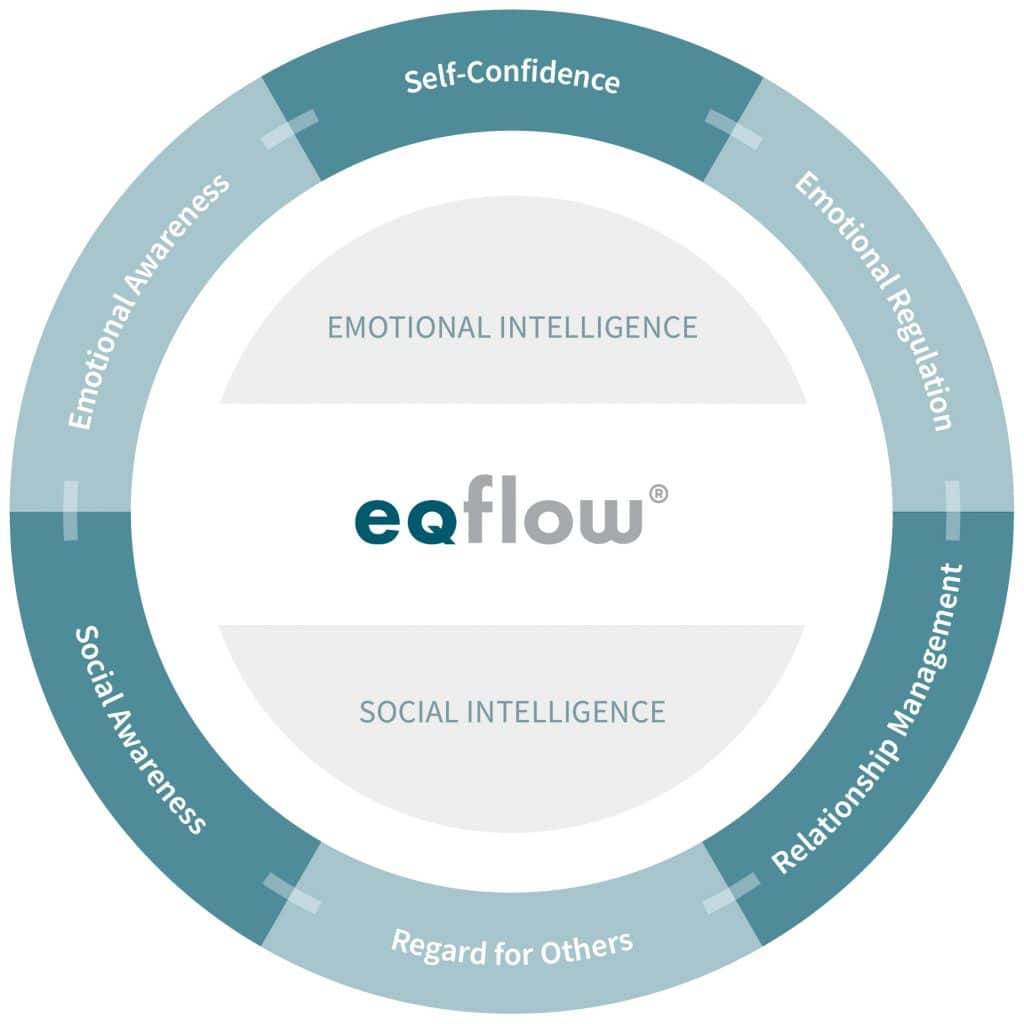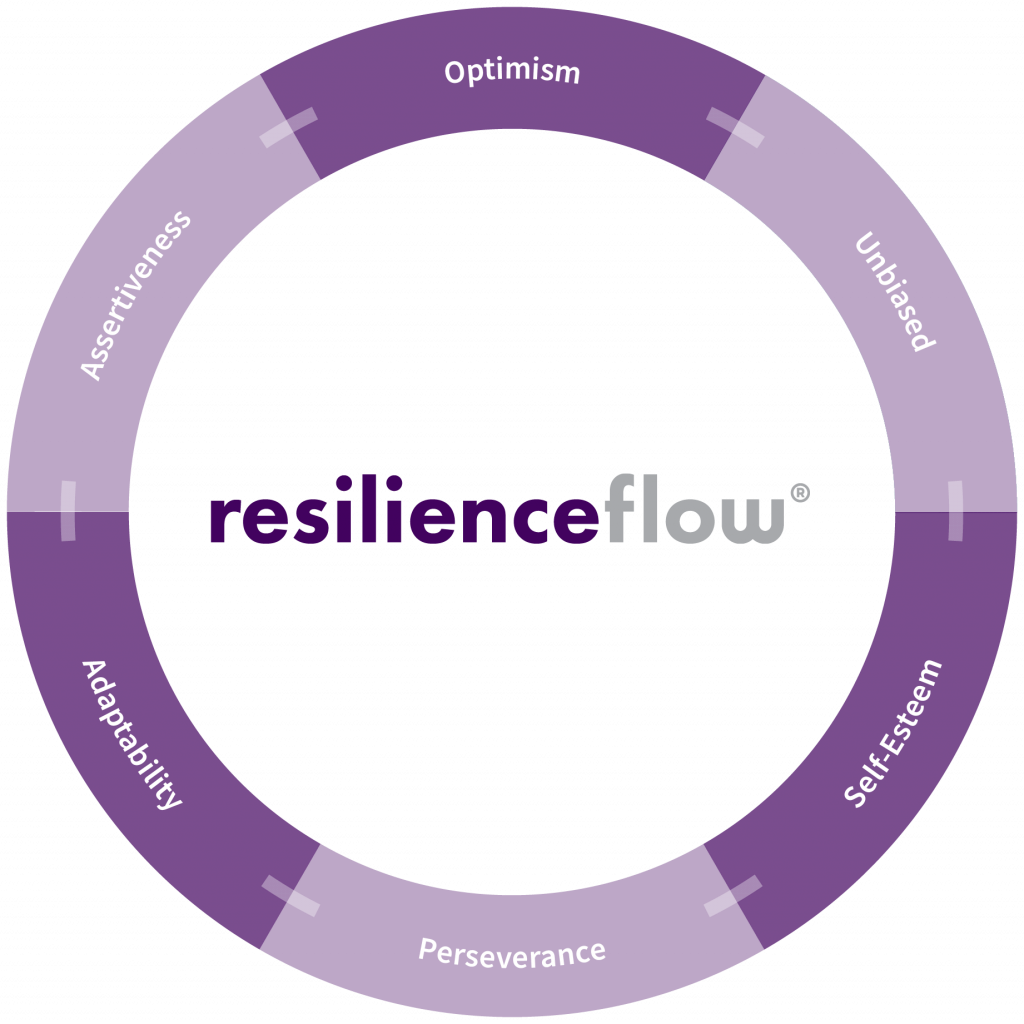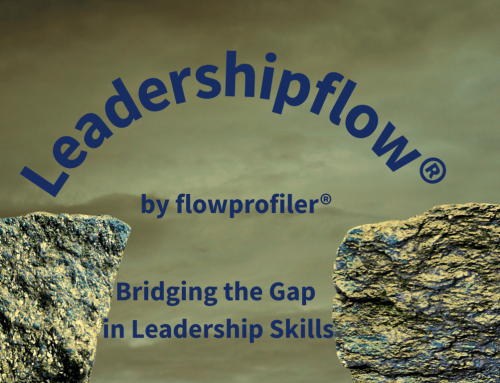As we approach 2026, leadership trends are emerging under the pressures of rapid technological change, shifting workforce expectations, and global uncertainty. People & Culture professionals are witnessing unprecedented demands on leaders to adapt and thrive in this environment.
unprecedented demands on leaders to adapt and thrive in this environment.
In fact, low employee engagement remains a critical (and costly) issue , Gallup’s latest global report found only 23% of employees worldwide are engaged at work, with disengagement costing the global economy an estimated $8.8 trillion annually (Gallup, 2023). Leaders must cultivate new skills and mindsets to keep their teams motivated, productive, and resilient amid constant change.
What will define effective leadership in 2026? Here are our top 7 predictions.
1. Emotional Intelligence as a “Power Skill”
More than ever, emotional intelligence (EQ) is recognised as a cornerstone of effective leadership. Far from being a “nice-to-have” soft skill, EQ is now viewed as a power skill for leaders (World Economic Forum, 2025). The World Economic Forum’s Future of Jobs Report 2025 listed emotional intelligence among the top skills for the next five years, alongside analytical and social skills (World Economic Forum, 2025).
In essence, leaders who can understand and manage their own emotions, and empathise with others, are positioned to build trust and navigate change more successfully.
Research consistently links high EQ in leaders to stronger team performance and change management. For example, a Harvard Business Review study found that leaders who demonstrate empathy and emotional insight significantly outperform their peers in overall effectiveness (Harvard Business Review, 2023, as cited in Hamirani, 2024).
Emotionally intelligent leaders foster loyalty, collaboration, and integrity in their teams, qualities that drive long-term organisational growth (Laurel Ridge Workforce Solutions, 2025). Conversely, de-prioritising these “people skills” can undermine results.
long-term organisational growth (Laurel Ridge Workforce Solutions, 2025). Conversely, de-prioritising these “people skills” can undermine results.
A recent Korn Ferry survey showed that only 40% of leaders currently prioritise emotional intelligence, and only 20% are focusing on employee engagement, a short-sighted trend that experts warn will backfire as disengaged teams underperform (Korn Ferry, 2025). Innovation and productivity suffer when employees don’t feel understood or engaged.
Leaders in 2026 will need to lead with empathy, self-awareness and emotional regulation. This means being attuned to the needs and stressors of their people, coaching rather than commanding, and cultivating a culture of psychological safety. It’s notable that hybrid work and multigenerational teams make emotional intelligence even more critical. Leaders must bridge diverse perspectives and keep teams connected (RocheMartin, 2025).
The good news is that EQ skills can be developed. With targeted feedback and training, leaders can improve competencies like self-awareness, empathy and emotional regulation. Organisations investing in emotional intelligence development are effectively future-proofing their leadership pipeline for the human-centric workplace of 2026.
2. Adaptive Leadership and Agility
In a world defined by VUCA (volatility, uncertainty, complexity, ambiguity), adaptive leadership has become a non-negotiable skill. Leaders can no longer rely on static playbooks, they must be able to pivot quickly, learn continuously, and guide their teams through uncharted territory. Adaptive leadership is about staying flexible and resilient in the face of novel challenges, whether it’s a sudden market disruption or an internal organisational change.
Crucially, adaptive leaders involve others in problem-solving and cultivate a culture of experimentation and learning (Heifetz, 2009). In 2026, this agility separates organisations that thrive from those that stagnate.
Current research underlines the rising importance of adaptability. Korn Ferry’s Global Workforce 2025 study found that learning agility and curiosity rank among the top priorities for leading companies when hiring or promoting leaders. In fact, the world’s “Most Admired Companies” place tremendous value on leaders who can innovate and adapt. About two-thirds of leaders at these organisations consider their companies “change-ready”, with teams capable of pivoting strategy as needed. This suggests that high-performing firms are actively cultivating leadership agility as a strategic asset. The message is clear: the ability to navigate and drive change is now as crucial as any traditional leadership skill.
To practice adaptive leadership, future leaders will need to embrace uncertainty and treat challenges as opportunities. This involves promoting a growth mindset and encouraging teams to experiment (rather than punishing failures). Practical steps include shortening decision cycles, empowering front-line employees to suggest innovations, and remaining calm and purpose-driven during crises. By doing so, adaptive leaders can steer organisations through turbulent times. As one HR executive succinctly put it, “We need leaders who thrive in chaos, who see around corners and inspire others to adapt”. Fostering this agility will help companies stay competitive and resilient in 2026’s fast-changing business environment.
3. Leading Digital Transformation and AI Integration
Digital transformation is not slowing down, if anything, it’s accelerating. By 2026, leaders will be operating in environments saturated with advanced technologies: artificial intelligence (AI) and automation, data analytics, digital collaboration tools, and more. A key leadership trend, therefore, is the rise of the tech-savvy, digitally fluent leader.
Organisations need leaders who can confidently integrate new technologies into strategy and operations, while guiding their people through the changes that technology brings.
Surveys show that executive mindsets toward technology are evolving. 71% of global CEOs and 78% of senior executives say they believe AI will boost their value as leaders over the next three years (Korn Ferry, 2025). Likewise, about three-quarters of business leaders report feeling excited about AI’s impact on their work. This optimism reflects a recognition that embracing AI and digital tools is essential for efficiency and informed decision-making.
There is also evidence linking tech-savvy leadership to better business outcomes: CEOs who scored higher on digital acumen assessments led firms with 8.7% annual revenue growth, versus 3.2% for lower-scoring CEOs. In short, leaders comfortable with technology drive stronger performance.
However, “digital leadership” is not just about tools, it’s about mindset. Leaders must cultivate a culture of continuous learning and innovation so that their teams stay ahead of technological trends. They should encourage upskilling in digital skills and data literacy across the organisation. Equally important is the human side of tech integration: effective digital leaders communicate a clear vision for how technology serves the organisation’s purpose, and they address employees’ concerns (for example, anxiety about AI-driven change) with transparency and empathy. Balancing tech and talent will be a hallmark of successful leaders in 2026. Those who can harness emerging technologies while engaging and developing their people will create agile, future-ready organisations.
4. Diversity, Equity & Inclusion (DEI) Remain Paramount
The year 2025 has seen some public backlash against corporate DEI initiatives, but the data is unequivocal: Diversity, Equity, and Inclusion remain crucial leadership priorities in 2026. Progressive organisations have shifted from viewing DEI as a mere compliance issue or PR exercise to recognising it as a strategic imperative for innovation, employee engagement, and risk management. Inclusive leadership, the ability to value diverse perspectives and ensure all team members feel they belong is a core competency for the future.
Despite political headwinds, most companies are not abandoning DEI. According to a mid-2025 employer survey, only 19% of companies had cut DEI funding, while 81% maintained or increased their DEI budgets (Resume.org survey, 2025, as cited in Diversity.com, 2025). In other words, the vast majority of organisations are continuing their DEI efforts, even if more quietly than before. This commitment is driven in part by talent considerations: 76% of Gen Z employees say they are more likely to stay at a company with an active DEI program (Catalyst, 2025).
Younger workers expect inclusive, equitable workplaces, and they will leave if those values are not met. Additionally, C-suite leaders warn that sidelining DEI can expose companies to heightened legal, reputational, and morale risks (NYU Meltzer Center, 2025). In summary, DEI is not a “luxury” to drop in tough times; it is tightly linked to retention, engagement, and organisational reputation.
The business case for diversity also continues to grow. Research by McKinsey & Company found that companies with highly diverse executive teams are substantially more likely to outperform financially. For instance, firms in the top quartile for ethnic and cultural diversity were 36% more likely to outperform those in the bottom quartile in profitability. Diverse teams spur innovation by bringing a range of ideas and experiences to the table, leading to better decision-making and problem-solving (McKinsey & Company, 2020).
Leaders who champion DEI, by building diverse teams, ensuring fair opportunities, and cultivating inclusive cultures – can expect stronger business outcomes and more resilient teams.
In 2026, effective leaders will treat DEI as a must-have leadership competency. This involves actively developing one’s cultural intelligence, addressing biases, and being able to engage and motivate people across different backgrounds. It also means embedding equity in processes (hiring, promotions, rewards) and creating channels for underrepresented voices to be heard. Leadership development programs are increasingly focusing on inclusive leadership skills for these reasons. Ultimately, leaders who make everyone feel valued will unlock the full potential of their talent – a decisive advantage in the years ahead.
5. Resilience and Well-Being in Leadership
If the past few years have taught us anything, it’s that resilience is one of the most critical traits for leaders and teams alike. The pandemic and other upheavals have underscored the importance of leaders who can remain steadfast under pressure, bounce back from setbacks, and support their team’s well-being. Going into 2026, resilience, often coupled with adaptability, is seen as a core leadership skill needed to navigate ongoing uncertainty, from economic fluctuations to fast-changing market conditions.
Surveys confirm that organisations are prioritising resilience. In the World Economic Forum’s 2025 skills outlook, “resilience, flexibility and agility” ranked second only to analytical thinking as the most essential core skill for workers, identified by 70% of employers.
outlook, “resilience, flexibility and agility” ranked second only to analytical thinking as the most essential core skill for workers, identified by 70% of employers.
Furthermore, the importance of resilience and agility has risen sharply, the share of companies emphasising these skills jumped by 17 percentage points compared to two years prior. This surge reflects how vital adaptability and stress tolerance have become in the current climate. Leaders are expected not only to manage their own stress and remain effective during crises, but also to foster resilience in their teams, helping people stay engaged and optimistic through challenges.
Notably, resilience and adaptability aren’t just about surviving turmoil; they directly impact performance and innovation. A recent study by the McKinsey Health Institute found that individuals who score high in both resilience and adaptability are over three times more likely to report high engagement at work, and nearly four times more likely to exhibit innovative behaviours, compared to those low in those traits (Brassey et al., 2024). In essence, resilient, adaptable leadership creates the conditions for employees to thrive and be creative, even in tough times. This finding reinforces why developing resilience is so important, it is tied to tangible business benefits like innovation, in addition to employee well-being.
For leaders, building resilience involves strengthening one’s emotional regulation, learning to view setbacks as learning opportunities (“failing forward”), and practicing self-care to avoid burnout. Many organisations are now training leaders in techniques like mindfulness, stress management, and coaching conversations to better support team well-being.
The concept of the leader as a “chief resilience officer” is gaining traction, someone who models calm, courage, and positivity when things go wrong. By prioritising mental health, maintaining transparency, and celebrating small wins, resilient leaders keep their teams focused and motivated through adversity. In 2026’s dynamic environment, this capacity to endure and grow through change will differentiate the most effective leaders.
6. Leading in a Hybrid Work World
Hybrid and remote work have become permanent features of the workplace, and leaders must continue to adapt their management approaches accordingly. By 2026, many organisations will have employees distributed across home and office environments, sometimes across geographies and time zones.
The challenge for leaders is to maintain team cohesion, performance and culture in this hybrid context, while also balancing employee preferences for flexibility. This requires a shift from traditional “face-time” management to more outcome-based leadership, trust-building, and adept use of digital collaboration tools.
Employee surveys reveal a clear tension, and opportunity, around hybrid work. According to Korn Ferry’s Workforce Survey, flexible work arrangements are highly prized: 80% of employees worldwide consider flexible hours a top priority when looking at jobs (Korn Ferry, 2025). Yet many companies have pushed for returning to the office. The reality on the ground is that currently almost two-thirds of employees globally are working full-time in the office, but only 19% of those actually want to be there full-time.
In contrast, 48% of workers would prefer a hybrid arrangement and another 25% would choose to be fully remote. This data underscores a critical point: flexibility is key to retention. Forcing employees back to the office against their preferences risks lower engagement or turnover. Indeed, research shows many employees would stay longer in their roles if given the option of flexible hours or remote work.
For leaders, the implication is clear, embrace hybrid work and learn to lead effectively within it. Leading hybrid teams requires intentional effort to ensure remote team members are as engaged and informed as co-located ones. Communication skills become even more vital: leaders should establish regular check-ins, leverage video and collaboration platforms to keep everyone in the loop, and be deliberate about recognizing achievements publicly (so remote employees feel seen). Trust is another cornerstone, managers must trust their teams to be productive without micromanaging, focusing on outcomes rather than physical presence. Building team trust can be supported through virtual team-building activities and fostering “water-cooler” moments online to maintain social connection.
Additionally, training for remote leadership is now a common development area. Many organisations are equipping leaders with best practices for managing performance from afar, coaching and giving feedback virtually, and onboarding new team members remotely. Leaders also need to be mindful of inclusion in hybrid settings, avoiding proximity bias (favouring those in-office) and ensuring career opportunities and information flow equally to those working remotely. By mastering these practices, leaders will create an agile, inclusive hybrid work culture. In 2026, the most successful leaders will be those who can harness the benefits of hybrid work, such as greater talent pools and employee autonomy, while mitigating its challenges through proactive, empathetic management.
7. Continuous Learning and Leadership Development
Finally, a crucial trend underpinning all the above is the emphasis on continuous learning and leadership development. The half-life of skills is shrinking, and the demands on leaders are expanding. Organisations have recognised that they must constantly develop their leadership pipeline to meet future challenges – not just at the executive level, but across emerging and mid-level leaders as well. A “one-and-done” approach to leadership training is no longer sufficient; instead, building a culture of ongoing development, coaching, and upskilling is key to future success.
The urgency for development is evident in global talent studies. The World Economic Forum (2025) reports that nearly two-thirds of employers identify widening skills gaps as the biggest barrier to future business transformation. In other words, organisations worry they don’t have the leadership and workforce capabilities needed for where they want to go. Yet development efforts are still lagging behind demand in many cases.
A staggering 77% of organisations say they lack sufficient leadership depth at all levels (Exec, 2025), highlighting a widespread succession and capability gap. Moreover, employees are actively seeking growth, learning opportunities are a major driver of retention. For example, 92% of employees in Brazil, 87% in India, 78% in the U.S., and 74% in the U.K. told Korn Ferry that learning and development opportunities are a key reason they stay with their organisation.
Conversely, if development is lacking, many will leave; one survey found 71% of Millennials would likely move on within 3 years if they feel their leadership skills aren’t being nurtured (Exec, 2025). These figures send a clear message: companies must invest in developing their leaders or risk losing talent and falling behind.
In practice, prioritising continuous leadership development means a few things. First, organisations are increasingly embedding learning into the flow of work, through coaching, mentorship, stretch assignments, and readily accessible online learning – rather than one-off training sessions. Leadership development programs are becoming more experiential and personalised, focusing on high-impact skills like strategic thinking, adaptability, inclusive communication, and emotional intelligence. Notably, many companies are also measuring the impact of development more rigorously (e.g. linking skill gains to business outcomes) to ensure a solid return on investment. The payoff for those who do invest is clear: companies that excel at leadership development report 25% higher business outcomes on average, and markedly better bench strength for the future. In 2026, an organisation’s ability to cultivate new leaders from within, and continually update their skillsets, will be a major competitive advantage.
Equipping Leaders for 2026 and Beyond: The Leadershipflow® Approach
Given these trends, how can organisations best prepare their leaders for the challenges of 2026? The research points to a need for holistic, evidence-based leadership development that targets the very competencies discussed above, emotional intelligence, adaptability, digital acumen, inclusivity, resilience, and the ability to lead hybrid teams.
This is precisely the focus of Leadershipflow®, an integrated leadership development pathway by flowprofiler®. Its value proposition is to meet leaders where they are and equip them with the behaviours and mindsets required for future demands.
Leadershipflow® programmes emphasise behavioural competencies and real-world application. Rather than generic training, each pathway is custom-built and aligned to an organisation’s specific context, goals, and values (flowprofiler, 2025) For example, to address the need for emotional intelligence, Leadershipflow incorporates the eqflow® assessment and targeted workshops to help leaders increase self-awareness, empathy and emotional regulation. For resilience, leaders engage with the resilienceflow® framework, learning techniques to manage stress and build optimism in their teams. Adaptive leadership is cultivated through scenario-based learning that pushes leaders out of their comfort zones and into “learning agility” experiences.
Additionally, the programme recognises the importance of inclusive leadership in diverse workplaces, it includes coaching on unconscious bias, communication across cultures, and building psychological safety in teams.
A few features make this approach especially suited for developing 2026-ready leaders. Each Leadershipflow® pathway is data-driven, beginning with assessments of leaders’ behavioural profiles across emotional intelligence, resilience, motivation, and other key areas. This data is used to personalise development plans (ensuring, for instance, that a leader who needs to improve adaptability gets focused support in that area). The programme also embeds accountability and real-world practice: between workshops, leaders undertake SkillSprints™ , on-the-job assignments to practice new skills, which are then reviewed and measured for behaviour change. This ensures that learning translates into action and tangible outcomes. Progress is tracked and reported, creating transparency and reinforcing commitment from both leaders and stakeholders. Moreover, Leadershipflow® is delivered by experienced coaches who provide continuity and deeper insight into each leader’s growth over time. The result is a sustained development journey rather than a one-time event.
Importantly, a modern leadership program like Leadershipflow® helps build the very agility and adaptability that future environments demand. It is “powered by flowprofiler®” psychometrics designed to develop behavioural agility in leaders (flowprofiler, 2025). Leaders learn to operate in their optimal performance “flow” zone – balancing focus, adaptability and well-being, so they can handle high-pressure situations and complex decisions with clarity. By aligning leadership behaviours with organisational strategy and culture, the programme also acts as a catalyst for cultural change: as leaders model new behaviours (e.g. inclusive decision-making or growth mindset), these cascade through the organisation, fostering a more agile and inclusive culture overall.
Preparing for the leadership demands of 2026 requires a proactive and comprehensive approach. The trends of emotional intelligence, adaptive capacity, digital leadership, DEI, resilience, hybrid work, and continuous learning are all interrelated, and a weakness in any one area can hinder a leader’s effectiveness. Organisations that invest in developing well-rounded leaders, who combine technical savvy with human-centric skills – will be the ones that thrive amid the coming changes. Leadershipflow® is an example of how to operationalise this, by providing leaders with the self-insight, practice and support needed to truly grow. Equipped with such development, today’s managers can become the kind of future-ready leaders who turn disruption into opportunity.
As we look toward 2026, one thing is clear: the future of leadership is about adaptability and humanity in equal measure. By focusing on evidence-based development in the areas outlined above, companies will not only navigate the trends, they will set themselves up to lead the way.
Reach out to us at hello@flowprofiler.com and let us show you how we work.
References (APA 7th Edition)
-
Brassey, J., De Smet, A., Maor, D., & Rabipour, S. (2024, December 6). Developing a resilient, adaptable workforce for an uncertain future. McKinsey & Company.
-
Diversity.com. (2025, June 13). Is DEI still relevant in 2025? Here’s why the answer is yes. Diversity.com Blog.
-
Gallup. (2023). State of the Global Workplace 2023 Report (Gallup Press release). Gallup.
-
Korn Ferry. (2025, April 1). Top 5 leadership trends of 2025. Korn Ferry Insights.
-
Korn Ferry. (2025, October 10). The perils of deprioritizing EQ. Korn Ferry Insights.
-
McKinsey & Company. (2020). Diversity wins: How inclusion matters (Report). McKinsey Global Institute.
-
RocheMartin. (2025, June 16). Emotional Intelligence is critical for future of work – not “nice to have”. RocheMartin Blog.
-
World Economic Forum. (2025, January 7). The Future of Jobs Report 2025 (Insight Report). World Economic Forum.
-
World Economic Forum. (2025). Top 10 skills outlook 2025 (Figure). In The Future of Jobs Report 2025. World Economic Forum.
-
Exec (Sean Linehan). (2025, June 13). 29 eye-opening leadership development statistics 2025. Exec Leadership Blog.
eqflow®, resilienceflow® and Leadershipflow® are a registered trademark for flowprofiler® | All Rights Reserved.




